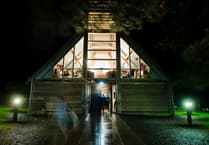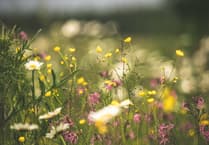The European or Hazel dormouse is one of Britain’s smallest and rarest mammals. With a body length of just 6cm to 9cm, dormice have soft golden-brown fur, big black eyes, long black whiskers and a fluffy prehensile tail.
Dormice live in deciduous woodland, hedgerows and dense scrub, spending most of the time up in the branches and rarely coming down to the ground.
Shy and nocturnal, they are seldom seen during the day. They live in small family groups and feed on flowers, pollen, fruits, insects and nuts. They build breeding nests out of honeysuckle bark and leaves and hibernate during the winter months, either on the ground (under logs, leaves, in grass tussocks and at the base of trees) or just beneath the ground where the temperature is more constant.
Once widespread, they are now largely restricted to southern England, with a few scattered populations in the Midlands, Wales and Lake District. Populations are estimated to have fallen by 78 per cent over the past 27 years and today, the dormouse is a rare and endangered species that is protected by law.
Loss of ancient woodland and hedgerows and poor or inappropriate management practices are thought to be a major reason for this decline.
Climate change also poses a major threat with milder winters and warmer temperatures disrupting their hibernation cycle, meaning they can wake early when sufficient food isn’t available.

The good news is that Haslemere provides a ‘hot spot’ for this species with dormice recorded as ‘present’ in at least 12 different sites across the town within the past ten years.
Since 2021 we have been working with local landowners, volunteers and the Surrey Dormouse Group to monitor dormouse populations and record their habitat preferences across a 3km transect of small woods and mature hedgerows west of Grayswood.
Monitoring is undertaken by trained licence holders and involves inspecting hedgerows for signs of dormouse presence (eg nibbled hazelnuts) and checking nest boxes for signs of use.
Our findings will be used to safeguard key dormouse corridors and develop guidance for landscape designers and managers that helps dormice thrive. Good hedgerow management will create a well-connected network of large and diverse native hedgerows linking deciduous woodlands across the landscape that benefits dormice and other wildlife including birds, bats, butterflies, moths and many other insects.
Interested in joining us? Send me an email at [email protected]
Dr Philippa Guest is chair of the Haslemere Biodiversity Project (HBP) and has lived in Haslemere for 27 years. She has worked for many years as a consulting expert in sustainable agriculture. Philippa is also part of Haslemere Vision, the community group that supported the town council in developing the Neighbourhood Plan. The HBP was originally established to develop evidence to support biodiversity policy in the Neighbourhood Plan.




